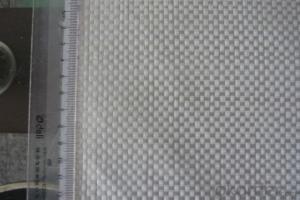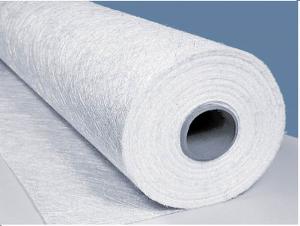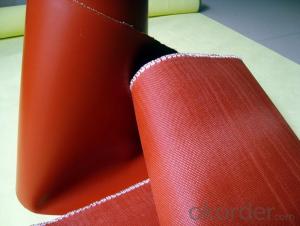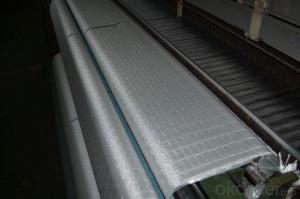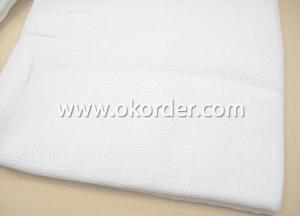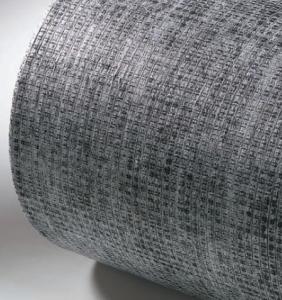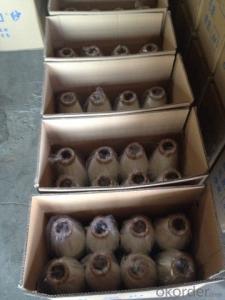High Strength Fiberglass Fabrics Woven Roving at Good Price
- Loading Port:
- Shanghai
- Payment Terms:
- TT OR LC
- Min Order Qty:
- 1 m.t.
- Supply Capability:
- 100 m.t./month
OKorder Service Pledge
OKorder Financial Service
You Might Also Like
Fiberglass woven roving Woven roving is a bidirectional fabric made by roving in plain weave pattern. The construction impants to the fabric an excellent dimensional stability during handling. Woven roving is a high-performance reinforcement and widely used in hand and machine production, such as boats, vessels, planes and automotive parts, furniture and sports facilities, and other fields.
plain weave, uniformity of thickness and low fuzz
fast and wet-out in resins
high mechanical strength and strength losses little in the humid environment.
Woven Roving | |||||||||
Specification | Tex | Fiber diameter(μm) | Count of cloth(end/cm) | Unit area mass(g/m2) | Weave pattern | ||||
Warp yarn | Weft yarn | Warp yarn | Weft yarn | Warp yarn | Weft yarn | ||||
EWR200 | 180 | 180 | 11 | 11 | 6.0 | 5.0 | 200±15 | plain | |
EWR300 | 400 | 400 | 13 | 13 | 4.0 | 3.5 | 300±30 | plain | |
EWR400 | 480 | 500 | 13 | 13 | 4.0 | 3.8 | 385±30 | plain | |
EWR600 | 1300 | 960 | 13 | 13 | 2.6 | 2.6 | 600±45 | plain | |
EWR800 | 2200 | 1760 | 13 | 13 | 2.0 | 2.0 | 810±40 | plain | |
Remark: The above data are only the representative products, different specifications are available as per customers’ requirements
- Q: Is fiberglass fabric resistant to pests and insects?
- Yes, fiberglass fabric is generally resistant to pests and insects. The nature of fiberglass, being made of woven glass fibers, makes it less appealing to pests and insects compared to other materials like cotton or wool. Fiberglass fabric is not a food source for pests, and its smooth and non-absorbent surface makes it less likely for insects to establish a habitat or lay eggs. However, it is important to note that while fiberglass fabric may be resistant to pests and insects, it is not completely immune. In rare cases, certain types of insects or pests may still be able to cause damage to fiberglass fabric, especially if the fabric is already compromised or damaged. Overall, fiberglass fabric is a good choice for those looking for a material that is generally resistant to pests and insects.
- Q: How does fiberglass fabric compare to Kevlar fabric?
- Fiberglass fabric and Kevlar fabric are both widely used in various industries for their desirable properties, but they have distinct differences that make them suitable for different applications. Firstly, fiberglass fabric is composed of fine strands of glass fibers that are woven together. It is known for its excellent strength and durability, making it a popular choice for applications requiring high tensile strength and resistance to abrasion. Fiberglass fabric is also highly resistant to heat and chemicals, making it suitable for use in insulation, electrical components, and corrosion-resistant applications. On the other hand, Kevlar fabric is made from synthetic para-aramid fibers, which are known for their exceptional strength-to-weight ratio. Kevlar fabric is significantly stronger than fiberglass fabric, as it possesses a higher tensile strength. This makes it ideal for applications where weight reduction and high impact resistance are critical factors, such as bulletproof vests, body armor, and aerospace components. Another notable difference between the two fabrics is their resistance to heat. While fiberglass fabric has excellent heat resistance, Kevlar fabric exhibits remarkable flame resistance, making it highly suitable for applications where fire protection is crucial, such as firefighting suits and thermal insulation. In terms of cost, fiberglass fabric is generally more affordable compared to Kevlar fabric, which is relatively expensive due to its advanced manufacturing process and superior performance characteristics. In conclusion, the choice between fiberglass fabric and Kevlar fabric ultimately depends on the specific requirements of the application. Fiberglass fabric excels in providing strength, durability, and resistance to heat and chemicals, while Kevlar fabric offers exceptional strength-to-weight ratio, impact resistance, and flame resistance.
- Q: Can fiberglass fabric be used for making shoes?
- Yes, fiberglass fabric can be used for making shoes. Fiberglass is a lightweight and durable material that is commonly used in various industries, including automotive, aerospace, and construction. When applied to shoes, fiberglass fabric provides strength and stability to the footwear while keeping it lightweight. The fabric can be used to reinforce areas that require extra support, such as the toe cap or the heel counter, enhancing the overall durability and structural integrity of the shoes. Additionally, fiberglass fabric is also known for its resistance to heat and chemicals, making it an ideal choice for shoes that may be exposed to harsh conditions.
- Q: Can fiberglass fabric be used for insulation in telecommunications infrastructure?
- Yes, fiberglass fabric can be used for insulation in telecommunications infrastructure. It is a commonly used material due to its excellent thermal insulation properties, durability, and resistance to moisture and chemicals.
- Q: How does fiberglass fabric compare to other insulation materials?
- When comparing fiberglass fabric to other insulation materials, it presents a range of advantages and disadvantages. One notable advantage of fiberglass fabric lies in its superior thermal insulation properties. With its low thermal conductivity, it effectively hinders heat transfer. This quality makes it an ideal option for both residential and commercial insulation needs, as it aids in retaining heat during colder months and keeping spaces cool in hotter periods. Moreover, fiberglass fabric is renowned for its durability and longevity. It possesses resistance to moisture, fire, and chemicals, rendering it a dependable choice for insulation purposes. It maintains its effectiveness and insulation properties over many years, as it does not easily degrade with time. Additionally, fiberglass fabric offers versatility and simplicity in installation. It comes in various forms, such as rolls, batts, and loose-fill, making it suitable for different applications. It can be effortlessly cut and shaped to fit any space, facilitating a seamless installation process. Furthermore, it does not necessitate specialized tools or equipment for installation, resulting in a cost-effective choice. Nonetheless, fiberglass fabric does have certain drawbacks that warrant consideration. One major concern revolves around the potential health risks associated with handling fiberglass. The minuscule glass fibers can become airborne during installation or if the fabric is damaged, leading to skin irritation, eye problems, and respiratory issues. Thus, it is crucial to wear appropriate protective gear, including gloves and masks, when working with fiberglass fabric. Furthermore, fiberglass fabric possesses relatively lower sound insulation capabilities when compared to certain other materials. While it does offer some level of soundproofing, it may not be as effective in reducing noise transmission as specialized soundproofing materials like foam or cellulose insulation. In conclusion, fiberglass fabric provides exceptional thermal insulation, durability, and ease of installation. However, it is important to be mindful of the potential health risks and its limitations in terms of sound insulation. It is advisable to consult professionals and consider specific requirements before selecting fiberglass fabric as an insulation material.
- Q: What is the melting point of fiberglass fabric?
- The melting point of fiberglass fabric typically ranges between 1,000 to 1,400 degrees Celsius (1,832 to 2,552 degrees Fahrenheit).
- Q: Is fiberglass fabric resistant to chemicals in swimming pools?
- Yes, fiberglass fabric is generally resistant to chemicals commonly found in swimming pools such as chlorine.
- Q: What are the different thicknesses of fiberglass fabric used in insulation?
- The different thicknesses of fiberglass fabric used in insulation can vary depending on the specific application and desired level of insulation. However, common thicknesses range from 0.5 inches to 2 inches.
- Q: Does the construction of insulation alkali resistant glass fiber cloth need fixing with thermal insulation nail?
- The alkali resistant mesh cloth does not need to be fixed (direct pressed into the anti cracking mortar surface), and galvanized steel wire mesh needs to be fixed with an anchor bolt.
- Q: What are the different weights per square yard available for fiberglass fabric?
- The weights per square yard of fiberglass fabric can vary depending on the intended use and specific project requirements. Typically, fiberglass fabric can be found in weights ranging from 0.5 ounces per square yard (OSY) up to 8 OSY or even higher. These varying weights provide a wide array of options to accommodate different applications. For lightweight and flexible materials, fiberglass fabrics weighing around 0.5-1.5 OSY are ideal. These fabrics are commonly used in industries like aerospace, automotive, and marine for applications such as surfboards, aircraft interiors, and lightweight composite structures. Medium weight fiberglass fabrics, usually weighing around 2-4 OSY, offer a good balance between flexibility and strength. They are commonly utilized in applications such as boat construction, wind turbine blades, and sporting goods, where weight and durability need to be balanced. On the other hand, heavier weight fiberglass fabrics, starting from 5 OSY and above, are renowned for their exceptional strength and stiffness. These fabrics are frequently employed in applications like industrial reinforcements, construction, insulation, and high-performance composites. It is important to note that the specific weights available may differ among manufacturers. Therefore, it is advisable to consult with suppliers or refer to their product catalogs to determine the complete range of weights per square yard available for fiberglass fabric.
Send your message to us
High Strength Fiberglass Fabrics Woven Roving at Good Price
- Loading Port:
- Shanghai
- Payment Terms:
- TT OR LC
- Min Order Qty:
- 1 m.t.
- Supply Capability:
- 100 m.t./month
OKorder Service Pledge
OKorder Financial Service
Similar products
Hot products
Hot Searches
Related keywords
